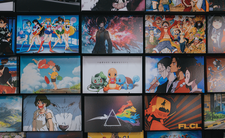Create cartoons and anime with OpenToonz
Toon Time

© Photo by Dex Ezekiel on Unsplash
OpenToonz is a professional animation tool for comic and manga artists.
Many readers associate the terms "manga" and "anime" respectively with Japanese comics and animated series, such as Dragon Ball or Pokemon, but today, manga and anime are global phenomena, and artists all over the world devote their attention and effort to the forms.
If you want to experiment with animation yourself, there is no need to stick to pen and paper. OpenToonz [1] is an open source tool that meets the highest animation standards. The program was partly developed in cooperation with famous animation companies such as Studio Ghibli [2], the creative minds behind classic anime films such as Princess Mononoke, Chihiro's Spirited Away, and How the Wind Rises.
OpenToonz is available in the package sources of most popular Linux distributions, so installing should be easy. To test the software with a sample scene, download the sample animation as a ZIP archive from the project page [3] (OpenToonz_sample.zip). You can view this sample on YouTube without installing OpenToonz [4]. Figure 1 shows OpenToonz with the official sample, which stars a dog named Dwanko.
[...]
Buy this article as PDF
(incl. VAT)
Buy Linux Magazine
Subscribe to our Linux Newsletters
Find Linux and Open Source Jobs
Subscribe to our ADMIN Newsletters
Support Our Work
Linux Magazine content is made possible with support from readers like you. Please consider contributing when you’ve found an article to be beneficial.

News
-
Fedora 43 Has Finally Landed
The Fedora Linux developers have announced their latest release, Fedora 43.
-
KDE Unleashes Plasma 6.5
The Plasma 6.5 desktop environment is now available with new features, improvements, and the usual bug fixes.
-
Xubuntu Site Possibly Hacked
It appears that the Xubuntu site was hacked and briefly served up a malicious ZIP file from its download page.
-
LMDE 7 Now Available
Linux Mint Debian Edition, version 7, has been officially released and is based on upstream Debian.
-
Linux Kernel 6.16 Reaches EOL
Linux kernel 6.16 has reached its end of life, which means you'll need to upgrade to the next stable release, Linux kernel 6.17.
-
Amazon Ditches Android for a Linux-Based OS
Amazon has migrated from Android to the Linux-based Vega OS for its Fire TV.
-
Cairo Dock 3.6 Now Available for More Compositors
If you're a fan of third-party desktop docks, then the latest release of Cairo Dock with Wayland support is for you.
-
System76 Unleashes Pop!_OS 24.04 Beta
System76's first beta of Pop!_OS 24.04 is an impressive feat.
-
Linux Kernel 6.17 is Available
Linus Torvalds has announced that the latest kernel has been released with plenty of core improvements and even more hardware support.
-
Kali Linux 2025.3 Released with New Hacking Tools
If you're a Kali Linux fan, you'll be glad to know that the third release of this famous pen-testing distribution is now available with updates for key components.

